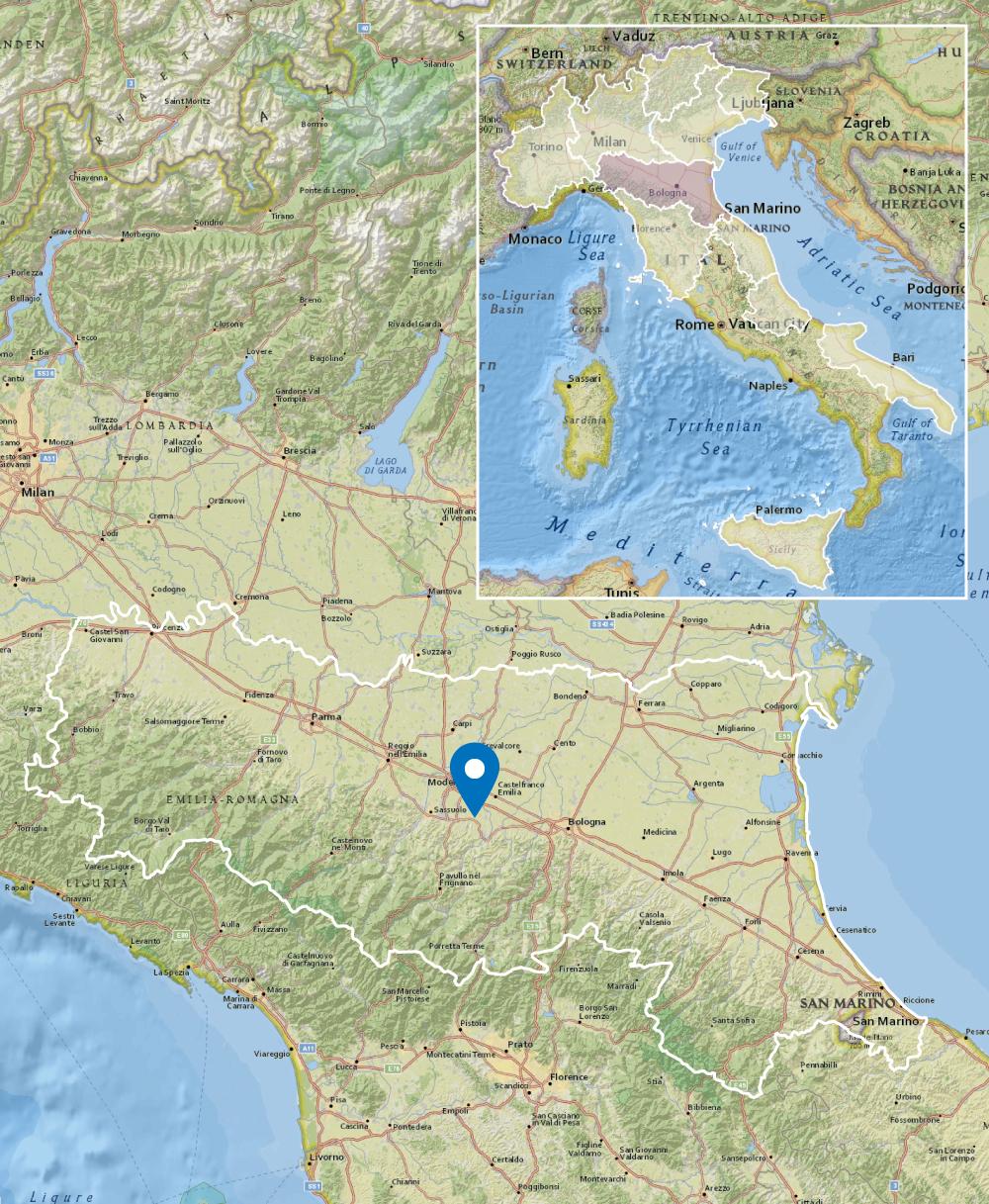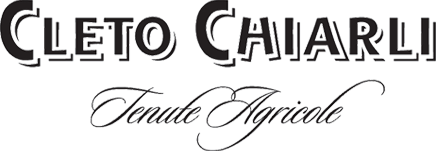| WINERY NAME: | CLETO CHIARLI |
| WINERY LOCATION: | Tenuta Cialdini, Castelvetro (Modena province), Emilia Romagna |
| VINEYARD LOCATION: | Modena province, Emilia Romagna |
| VINEYARD LAND: | More than 300 acres (120 ha) |
| FARMING PRACTICES: | Equalitas Certified |
| GRAPE VARIETIES: | Lambrusco Grasparossa and Lambrusco di Sorbara; smaller amounts of Lambrusco Salamino, Grechetto Gentile, and Chardonnay |
| WINE STYLES: | Dry red sparkling, dry and sweet red frizzante, dry rosé sparkling, dry white sparkling |
| WINE REGIONS: | EMILIA-ROMAGNA |
| TOTAL WINE PRODUCTION: | 900,000 bottles (675,000 liters) |
| YEAR FOUNDED: | 2003 (parent winery in 1860) |
| OWNER(S): | Mauro and Anselmo Chiarli |
| WINEMAKER(S): | Filippo Mattioli |
 Beatrice, Anselmo & Tommaso Chiarli |
The story of Lambrusco is closely intertwined with the Chiarli family of Modena, arguably the most important producers of red sparkling wine in the world. The tale begins with Cleto Chiarli, the proprietor of the Modena restaurant Osteria dell’Artigliere in the mid-1800s. As was common for restaurateurs and innkeepers in those days, Chiarli made his own wine to sell at the osteria. Naturally, the wine was made from Lambrusco, the area’s primary grape variety, and it was well received by customers—so much so that in 1860 Chiarli was emboldened to found Emilia Romagna’s first wine-producing company, the Cantina Cleto Chiarli. The company thrived, and eventually, under the Chiarli 1860 name, it became the largest privately-owned producer of Lambrusco. The Chiarli family was also instrumental in taking Lambrusco from being just one among innumerable Italian local wines to its status as a popular international phenomenon and one of the country’s primary exports. A century after the winery’s founding, the Chiarli family pioneered the use of the Charmat or tank method of sparkling wine production for Lambrusco. Whereas the customary “ancestral” method always resulted in dry, fizzy, cloudy wines because it continued to ferment inside the bottle after it was sealed, Charmat-method Lambrusco introduced several advantages. It allowed filtration to make the wine clear, offered the opportunity to increase the bottle pressure to the fully sparkling level, and made it possible to bottle a wine that would retain residual sugar. The new Lambrusco—sweet, red, clear, and effervescent—became a sensation, and for a couple of decades, it was the most-imported wine category in the United States. Although other, larger wine companies supplied the majority of Lambrusco exports, Chiarli 1860 held its own among the top Emilia Romagna wineries. By the turn of the 21st century, the business was in the hands of Cleto Chiarli’s great-grandsons Mauro and Anselmo Chiarli, and they decided to spin off a new production center that would move away from mass-market Lambrusco into a more artisanal, quality-driven style. In 2002, they began building a new facility to produce a higher-end line of Lambrusco wines using carefully selected, estate-grown grapes and state-of-the-art equipment. The new company was named Cleto Chiarli after the founder. The new facility was built at an estate in the heart of the Lambrusco Grasparossa di Castelvetro DOC in Modena province. Here, the family had long owned vineyards and a manor house where Gen. Enrico Cialdini, a hero of the Italian reunification, was born in 1811. Slowly and carefully, the Cialdini house was converted into a modern winemaking facility. Surrounding it are more than 100 acres of Lambrusco Grasparossa vineyards, as well as 17 acres of Grechetto Gentile vines. The Cleto Chiarli estate also includes vineyards in two other parts of the province, growing Lambrusco Grasparossa and Lambrusco di Sorbara. All of them are certified VIVA under the government’s Sustainable Viticulture Program. Like Cleto Chiarli the man, Cleto Chiarli the winery continues to be an innovator and leader in the production of fine Lambrusco wines, whose story is still being written. |
 |
WINES IN THE CLETO CHIARLI PORTFOLIO
· Cleto Chiarli "Rosé de Noir" Brut Vino Spumante
· Cleto Chiarli “Vecchia Modena Premium” Lambrusco di Sorbara DOC Brut · Cleto Chiarli “Lambrusco del Fondatore” Lambrusco di Sorbara DOC · Cleto Chiarli “Vecchia Modena Nero" Vigneto Cialdini Lambrusco Grasparossa di Castelvetro DOC Brut · Cleto Chiarli “Centenario” Lambrusco di Modena DOC Amabile · Cleto Chiarli Organic Lambrusco di Modena DOC · Cleto Chiarli “Pruno Nero” Modena DOC Lambrusco Dry Spumante · Cleto Chiarli "Centenario" Lambrusco di Modena DOC Rosato Demi-sec |

